"건축은 공간, 움직임, 그리고 빛의 섬세한 춤이다. 최고의 건축은 침묵 속에서 말한다." - 루이스 칸
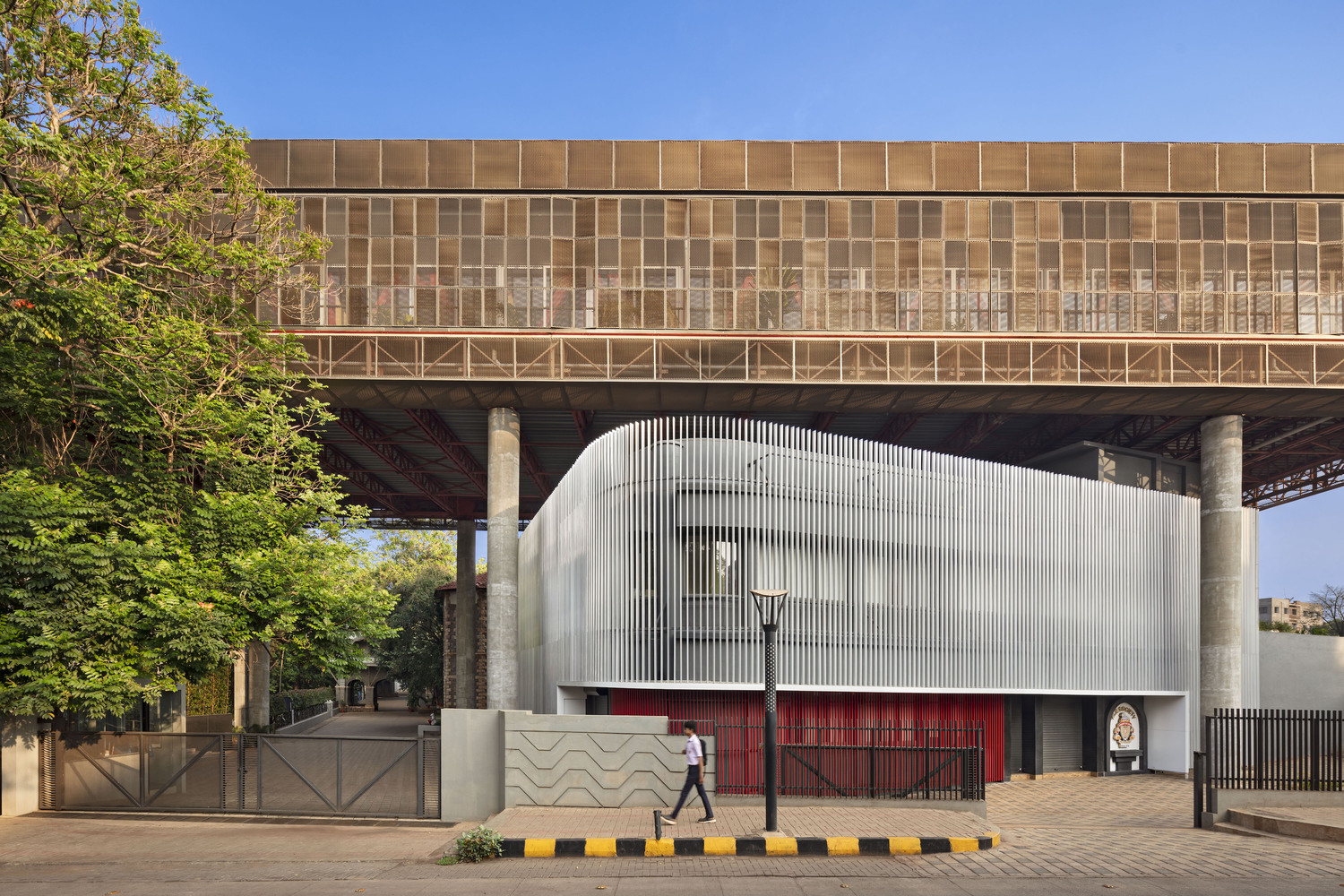
 |
 |
 |
공중에 부유하는 역사: 써드스페이스 아키텍처의 호버 스페이스 Thirdspace Architecture Studio-Hover Space – Extension to the KLE Society Head Office
역사를 존중하는 최소 개입의 철학
벨가비의 100년 된 교육 캠퍼스 내 50년의 역사를 간직한 KLE 소사이어티 본사의 증축 프로젝트는 건축가에게 특별한 도전을 제시했습니다. 기존 건물의 온전함을 해치지 않고, 일상 업무를 방해하지 않으며, 역사적 가치를 훼손하지 않는 방식으로 확장해야 했기 때문입니다.
건축적으로는 평범했지만 기관의 정체성을 담고 있던 이 2층 건물은 이미 구조 보강이 이루어졌고 지속적으로 사용 중이었습니다. 이런 상황에서 써드스페이스 건축사무소는 대담하면서도 섬세한 해법을 제시했습니다. 주요 도로, 역사적 캠퍼스, 그리고 운동장이라는 세 가지 서로 다른 맥락 속에서 조화를 이루어야 하는 과제였습니다.
공중에 떠 있는 볼륨: 경량감이 만드는 존재감
해결책은 미니멀하면서도 전략적인 개입이었습니다. 단 여덟 개의 원통형 철근콘크리트 기둥만으로 지지되어 기존 건물 위에 '부유'하는 새로운 구조물은 아래의 기존 활동을 방해하지 않으면서도 강렬한 정체성을 드러냅니다. 두 개의 층 높이 붉은색 트러스로 틀이 잡힌 이 공중 볼륨은 1,000㎡의 개방형 사무 공간을 형성하며, 시각적 경량감과 공간적 효율성을 동시에 실현했습니다.
수직 동선 코어가 증축부를 지상과 연결하며 L자형 프로필을 형성해 중앙 가로수길과 일치하는 인상적인 3층 높이의 진입 포털을 만들어냅니다. 이 포털은 캠퍼스 진입의 경계를 표시할 뿐만 아니라 유산 건축물들을 액자처럼 담아내는 역할을 합니다.
기후에 대응하는 중간 영역: 현대적 해석의 베란다
식민지 건축에서 영감을 받은 연속적인 베란다가 건물을 감싸고 있습니다. 이 중간 영역은 사회적 교류 공간이자 기후적 완충지 역할을 하며, 내부를 강렬한 햇빛과 몬순 기간의 비로부터 보호합니다. 작동 가능한 알루미늄 핀과 확장 메시는 빛과 시야를 섬세하게 제어하고, 미닫이 유리문은 실외와의 원활한 연결을 가능하게 합니다.
실내는 중립적인 색조를 기본으로 하되, 붉은색 구조적 요소와 노란색 소파의 생기 넘치는 악센트가 활력을 불어넣습니다. 곳곳에 배치된 실내 식물들은 자연과의 연결성을 강화하며, 풍부한 자연광이 사무 공간 전체를 밝게 비춥니다.
공간의 흐름: 연결과 기능의 균형
평면도는 세 구역으로 명확하게 구분됩니다. 회장실이 있는 입구 로비, 개인 사무실과 회의실이 있는 중앙 블록, 그리고 도시와 운동장이 내려다보이는 개방형 워크스테이션이 있는 후면부로 나뉩니다. 노출된 지붕 트러스와 중앙의 천창은 주 순환 동선을 자연스럽게 정의하며, 공간에 리듬감과 방향성을 부여합니다.
운동장이 내려다보이는 유리 엘리베이터는 옛것과 새것을 연결하는 투명한 매개체로서, 건물 간 이동 시 잠시 '멈춤'의 순간을 제공합니다. 기존 사무실의 옥상 테라스는 새 구조물에 의해 부분적으로 가려진 중간 영역으로 재해석되었으며, 조각적인 나선형 계단을 통해 접근할 수 있습니다. 이 붉은색 나선 계단은 건물 전체에 시각적인 활력을 불어넣는 핵심 요소입니다.
세 가지 맥락에 대한 응답: 도시, 캠퍼스, 운동장
처음에는 단순한 선형 볼륨으로 보이지만, 사실 이 건물은 다양한 맥락적, 기능적, 기후적 요구에 대한 층층이 쌓인 해답입니다. 주요 도로를 향해서는 고요하고 차폐된 파사드를 제시하며 도시의 소음과 혼잡함을 차단합니다. 캠퍼스 쪽으로는 환영하는 포털 역할을 하며, 운동장을 향해서는 미묘하지만 가시적인 경계를 형성합니다.
기술과 지속가능성: 현지 재료와 기후 대응
구조적으로는 기존 건물과 최소한으로 연결되는 독립적인 시스템을 채택했습니다. 확장 메시 스크린과 철골 구조는 현지에서 조달된 재료로 제작되었으며, 미닫이 유리문과 통풍 가능한 공간 설계는 자연 환기를 극대화합니다. 깊은 베란다는 고온 다습한 기후에 효과적으로 대응하면서도 풍부한 자연광을 실내로 끌어들입니다.
천창과 확장 메시 스크린의 조합은 실내에 은은한 그림자 패턴을 만들어내며, 하루 종일 변화하는 빛의 풍경을 선사합니다. 이러한 빛과 그림자의 놀이는 단순한 사무 공간을 감각적인 경험의 장소로 변모시킵니다.
결론: 과거와 현재의 대화
써드스페이스 건축사무소의 '호버 스페이스'는 단순한 사무실 증축 그 이상의 의미를 담고 있습니다. 과거와 현재, 구조와 경량감, 닫힘과 열림 사이의 섬세한 균형을 통해 기존 건물과 조화롭게 공존하는 방법을 보여줍니다. 최소한의 구조적 접촉으로 '부유'하는 듯한 느낌은 기관의 역사를 존중하면서도 미래를 향한 시선을 담아냅니다.
이 프로젝트는 현대 건축의 확장이 반드시 기존의 것을 대체하거나 압도하는 방식일 필요는 없음을 증명합니다. 오히려 역사적 맥락을 존중하고 기존의 활동과 기능을 유지하는 가운데, 새로운 감각과 기능을 더하는 '공존'의 방식이 가능함을 보여줍니다. 과거를 품으면서도 현재를 담아내는 이 '공중에 떠 있는 공간'은 역사와 혁신, 전통과 현대가 공존하는 건축적 대화의 아름다운 예시입니다.
Write by Claude & Jean Browwn
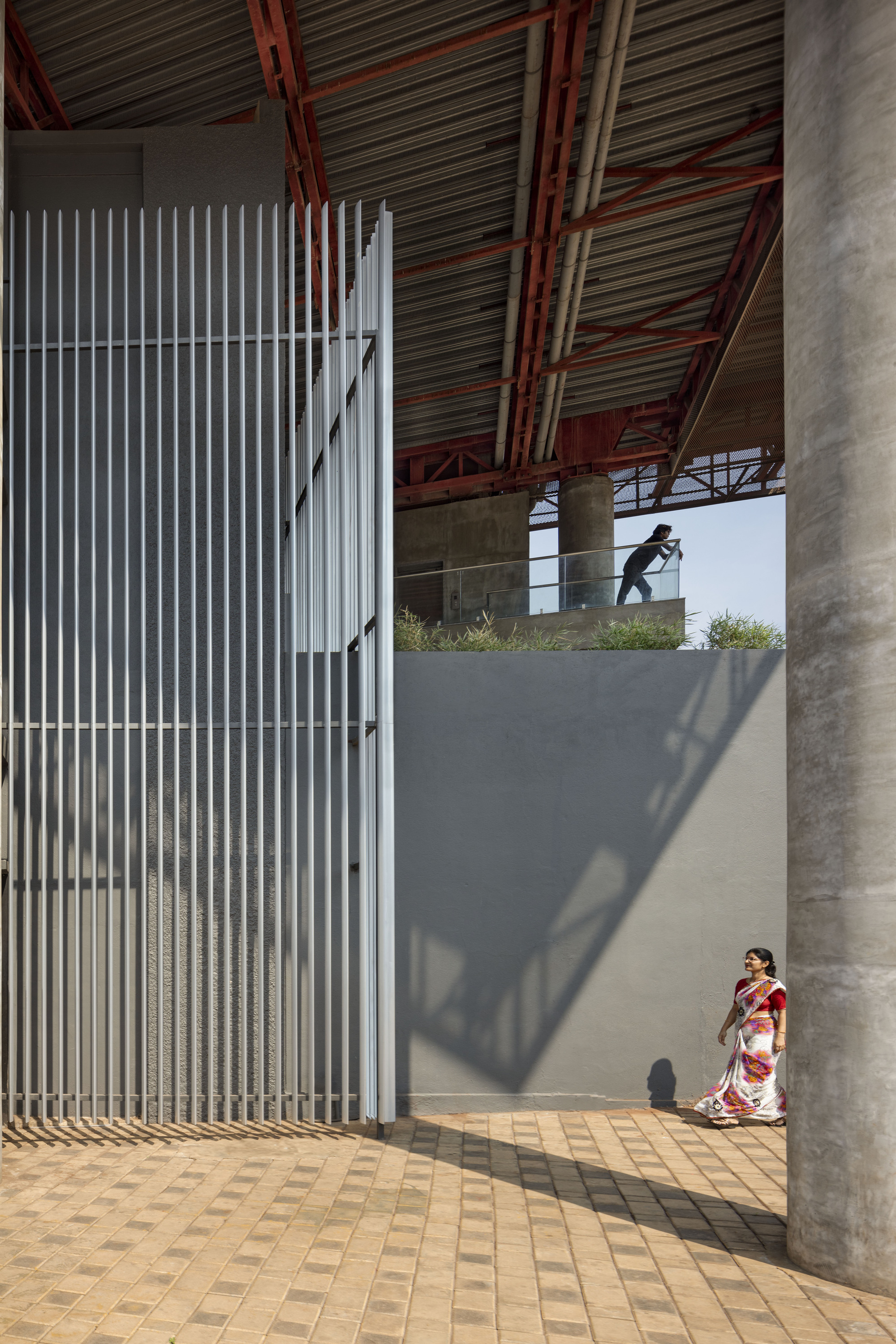






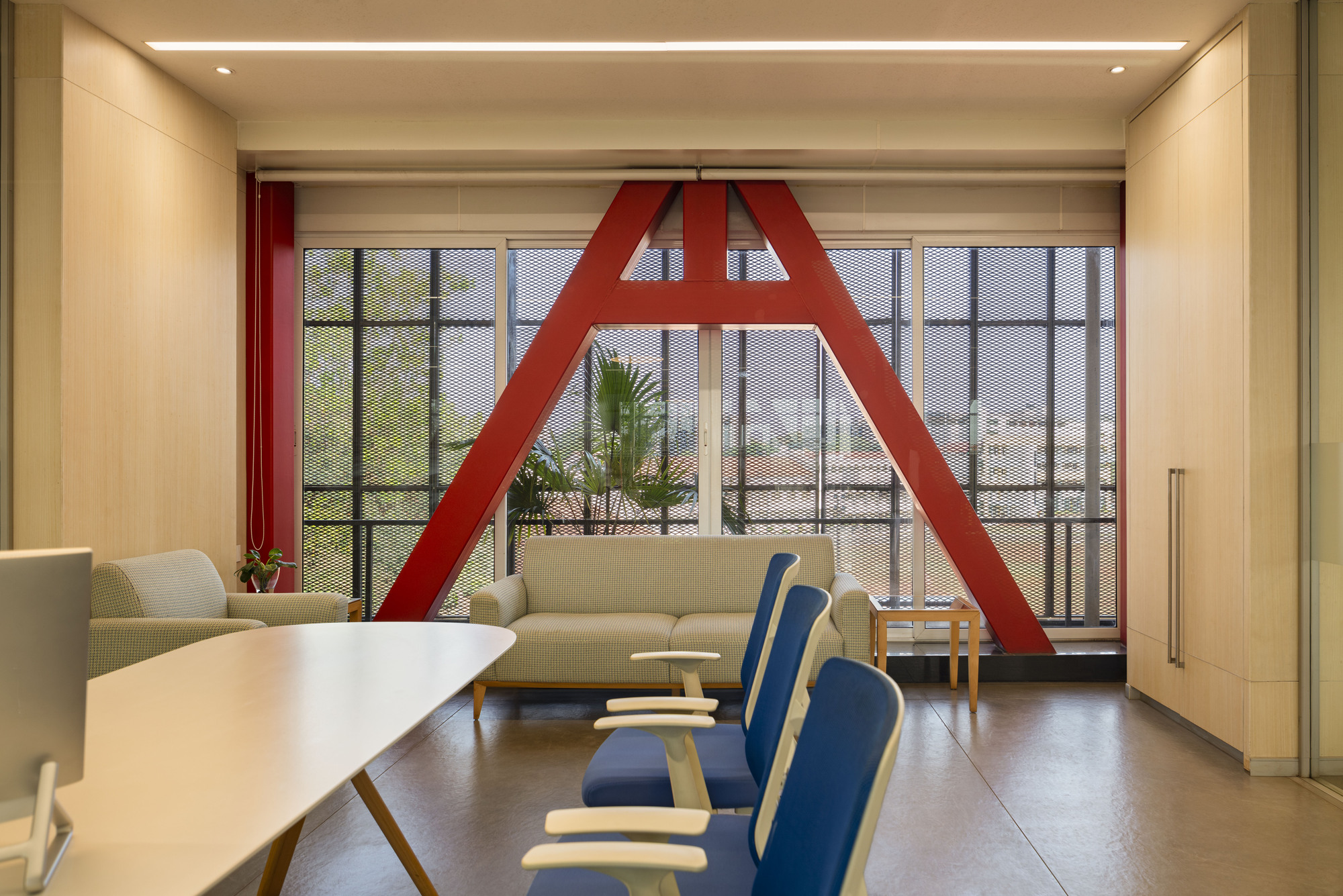
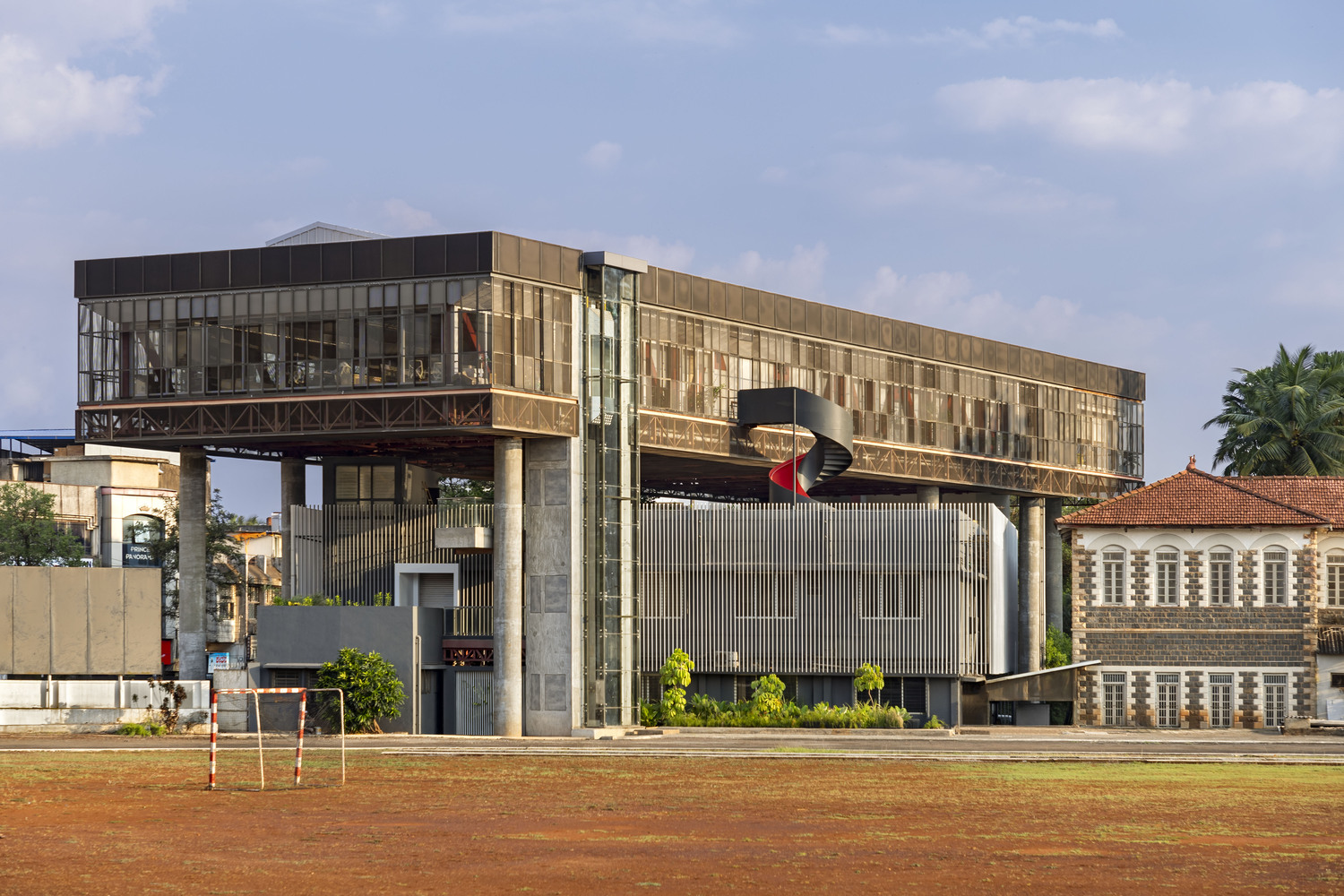

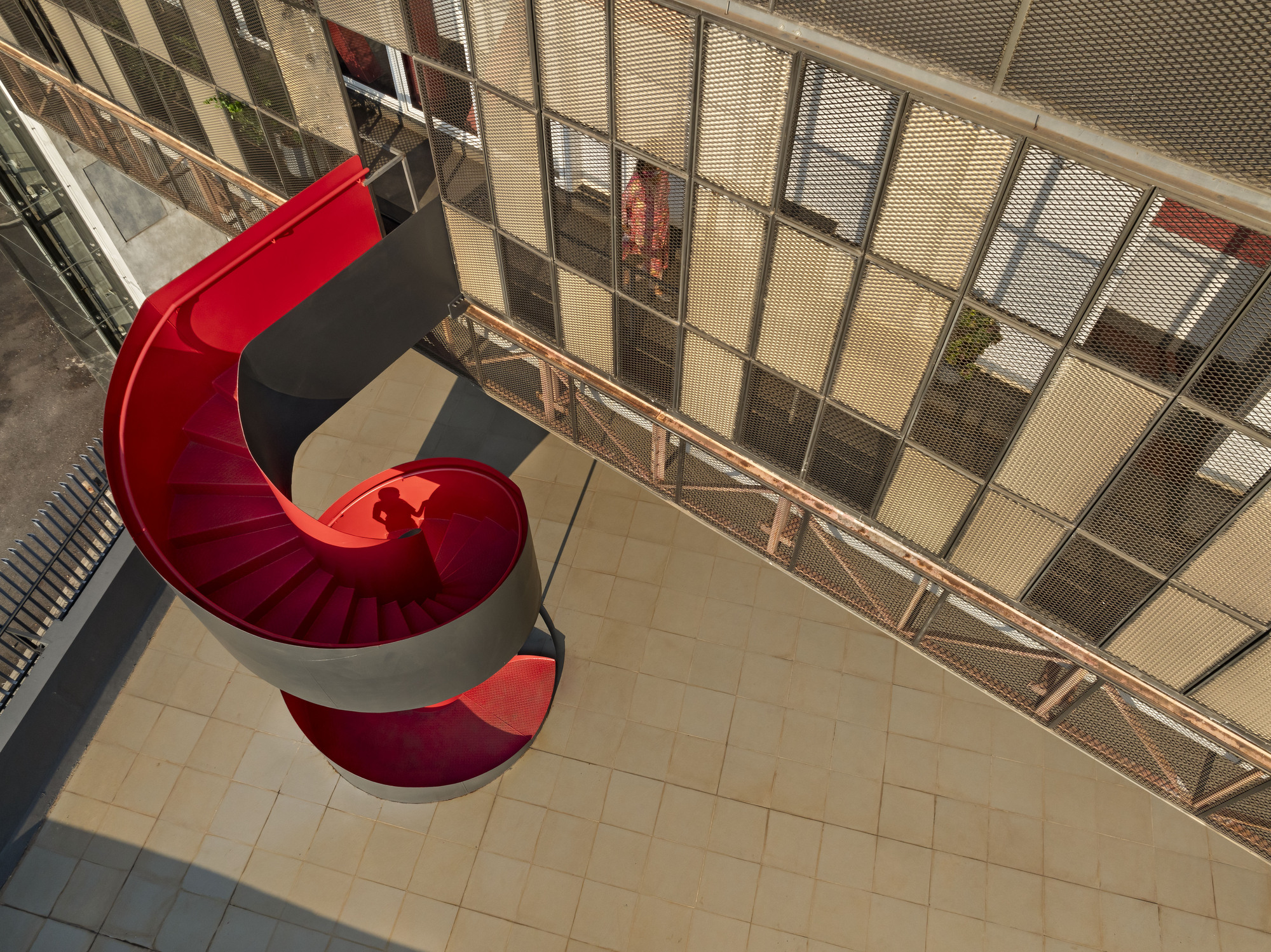

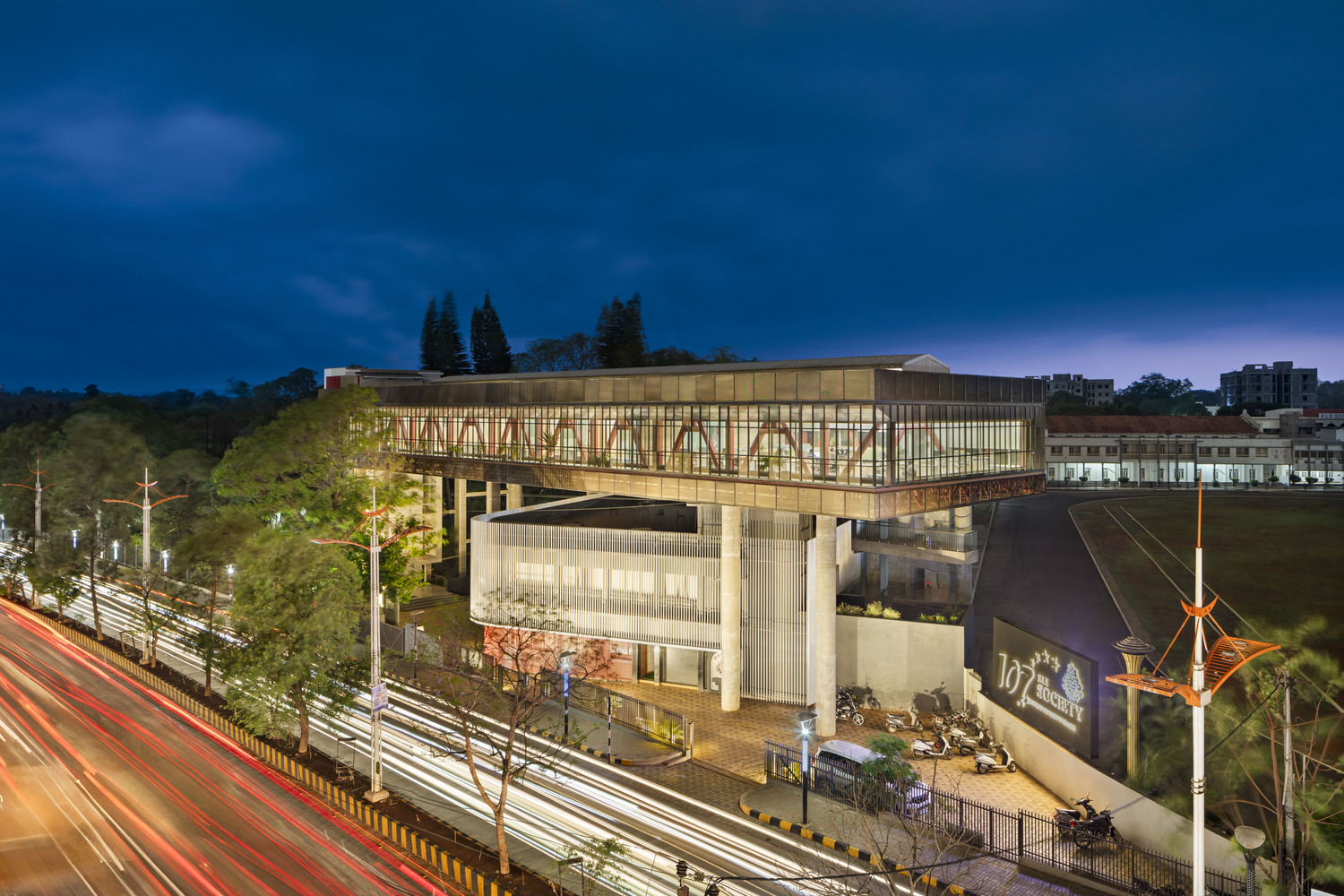


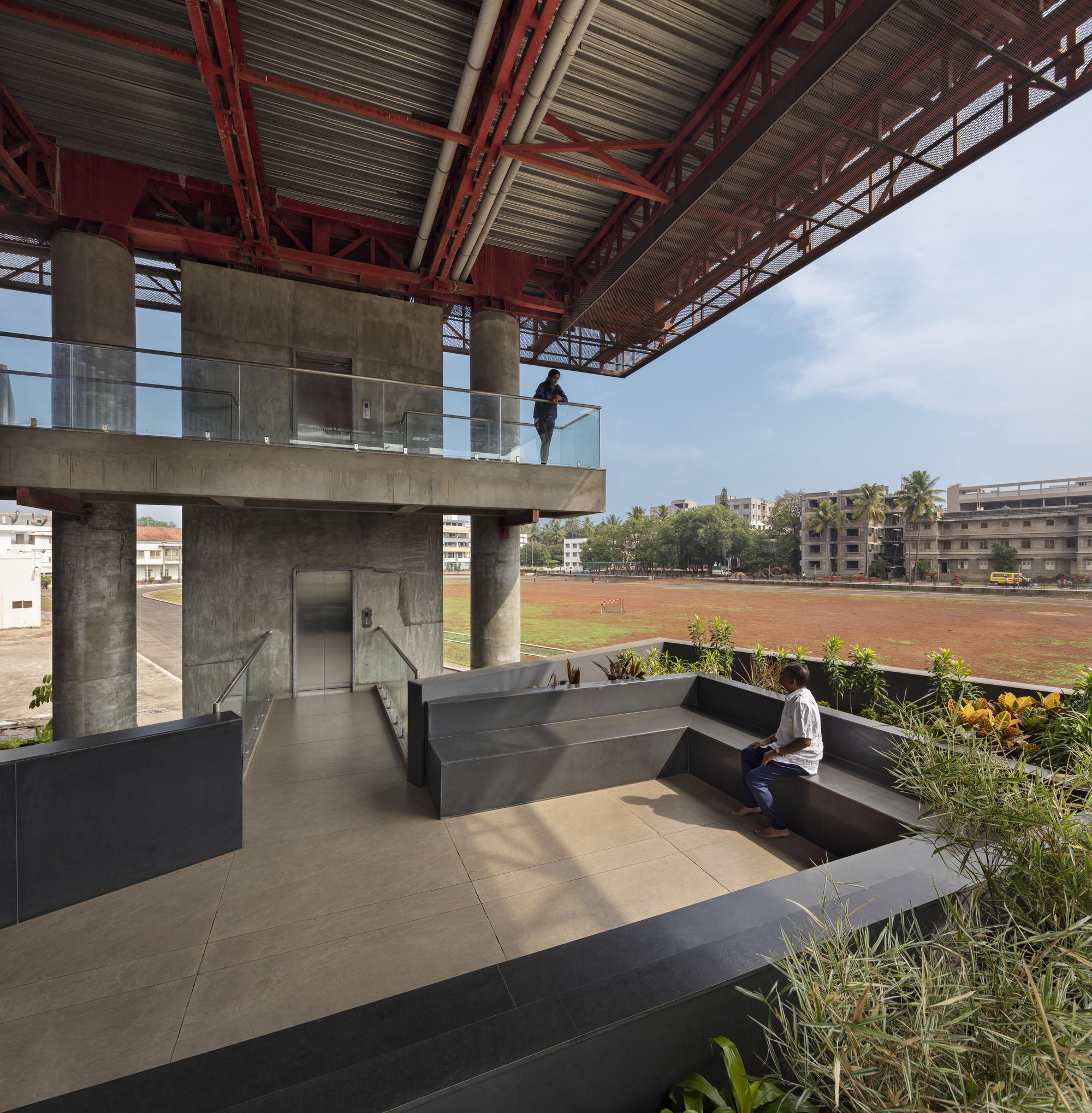


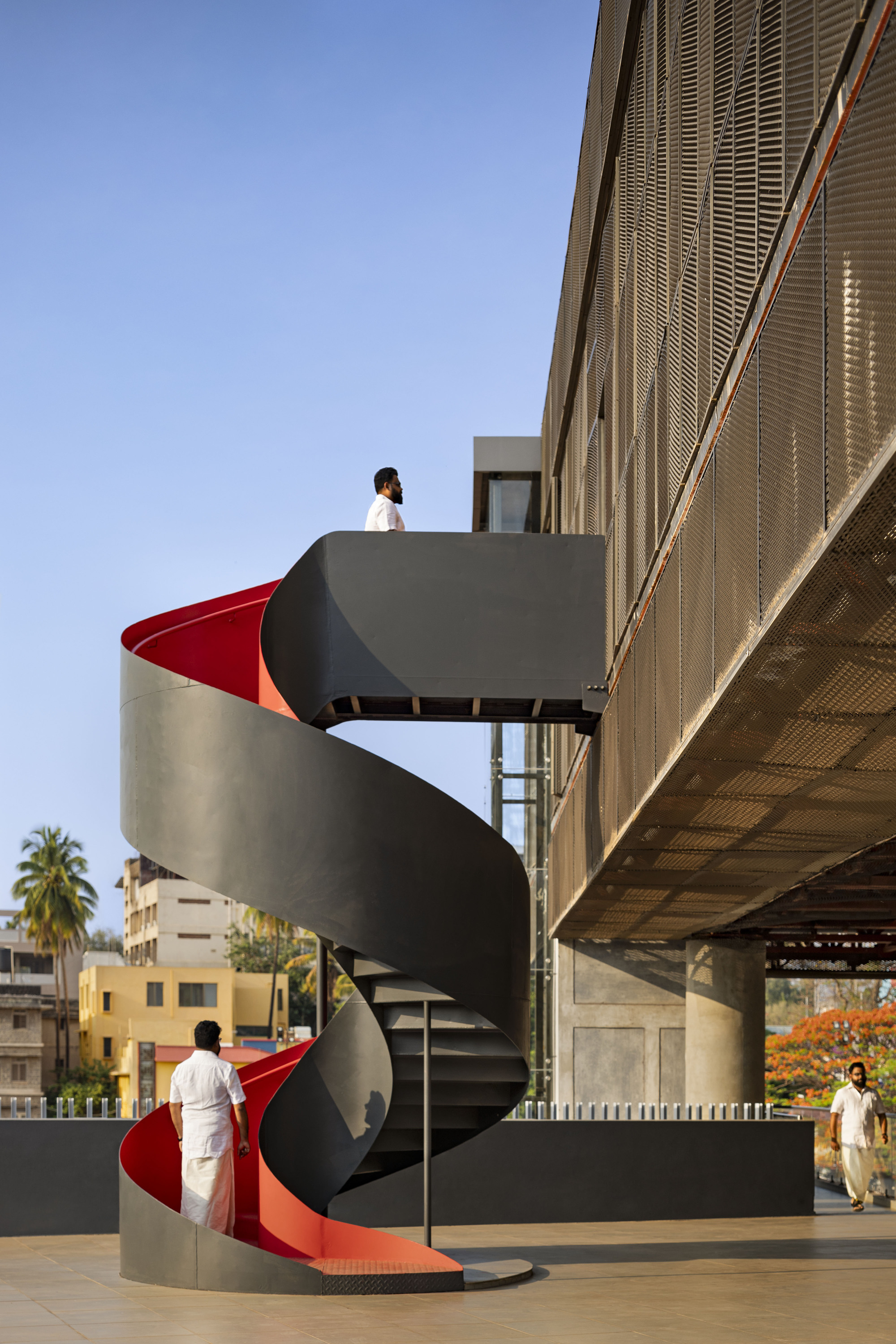

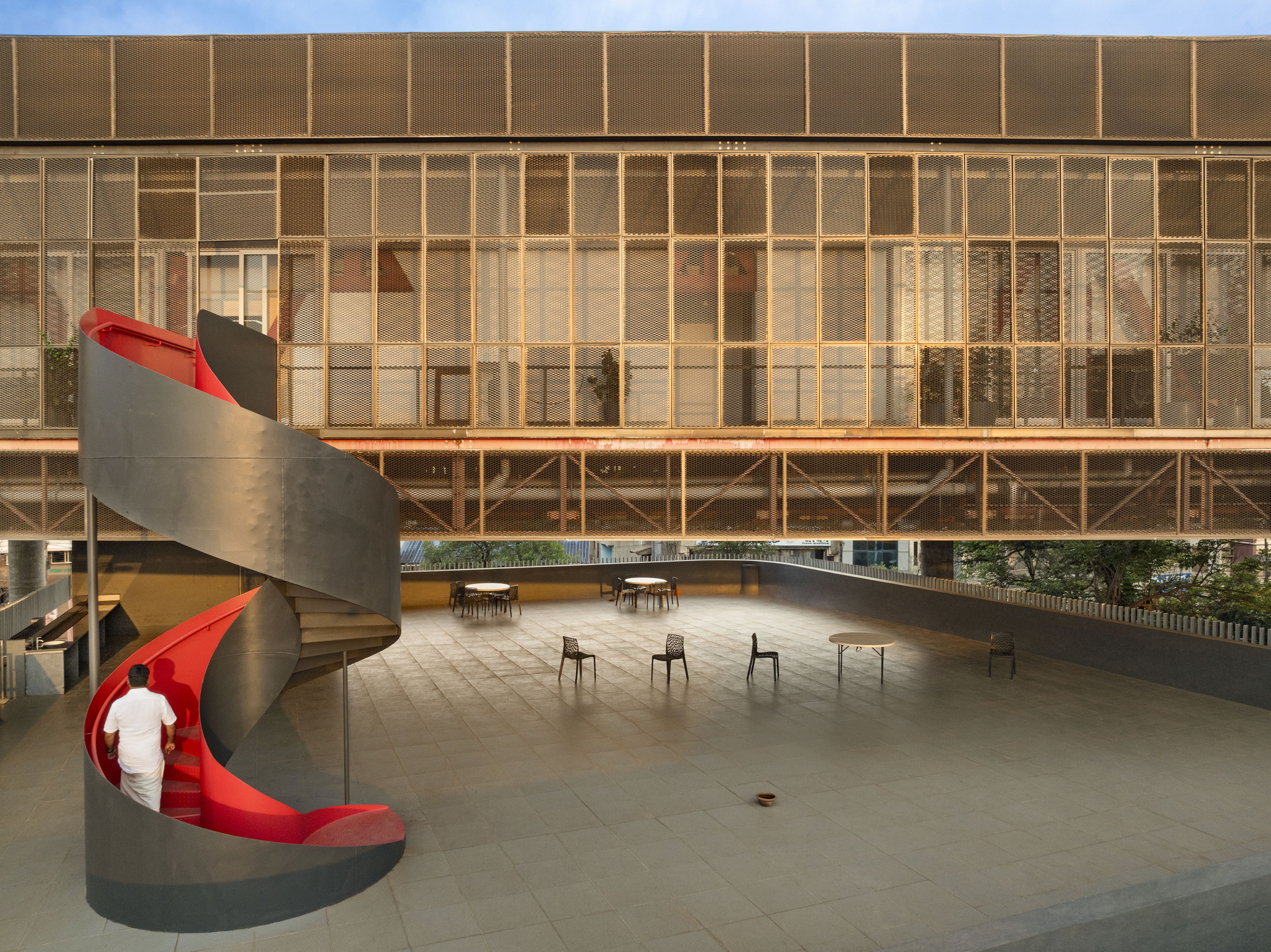
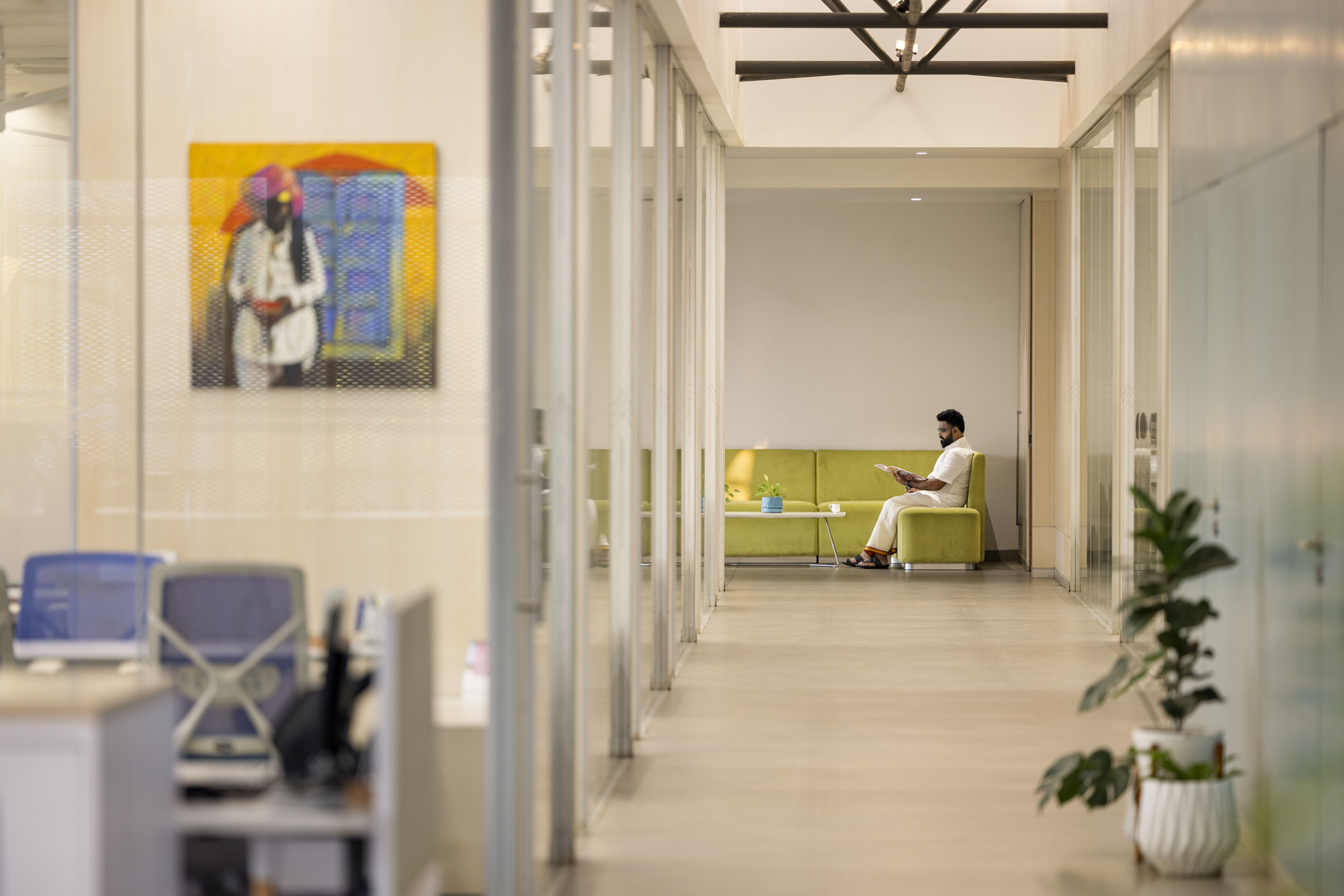

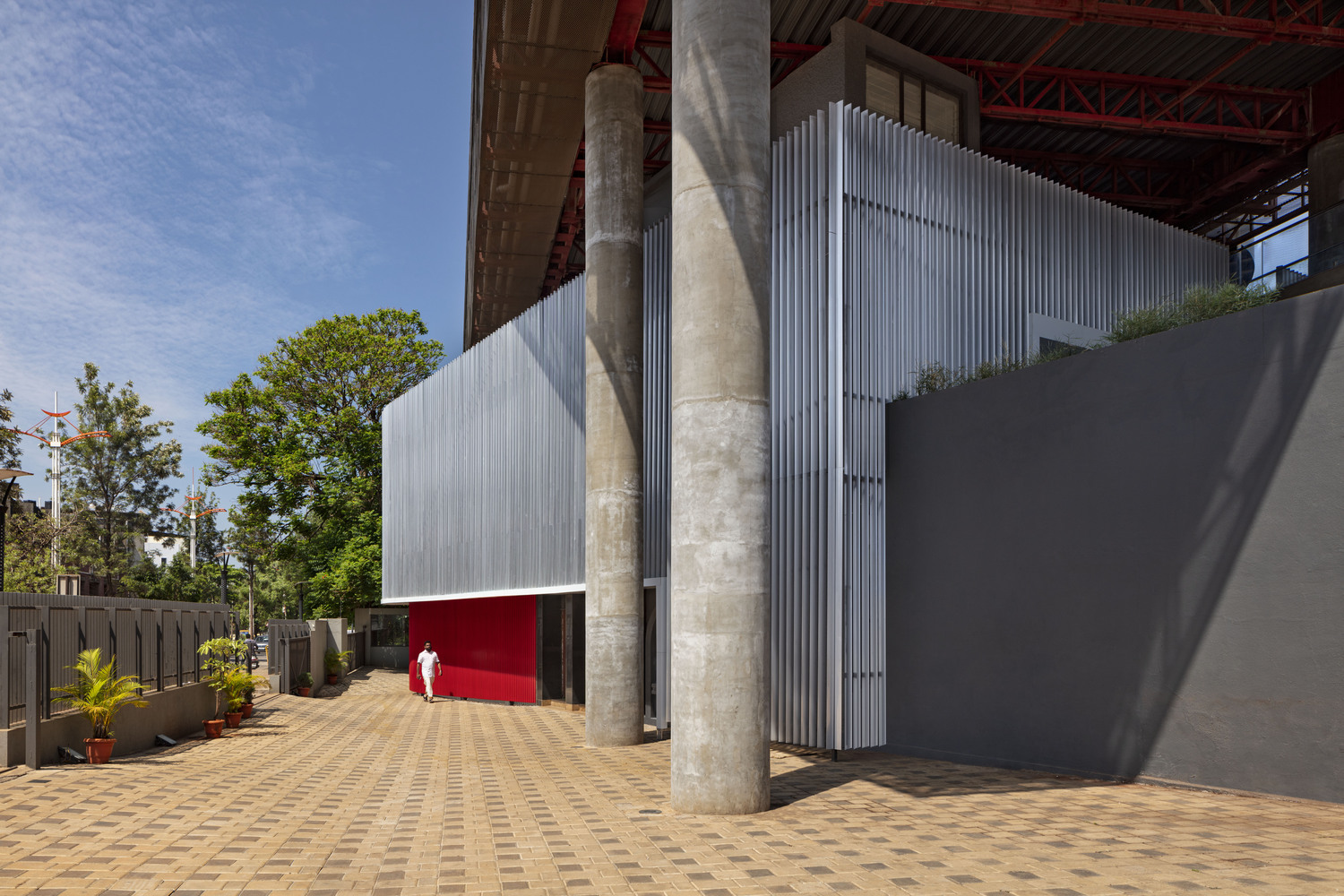


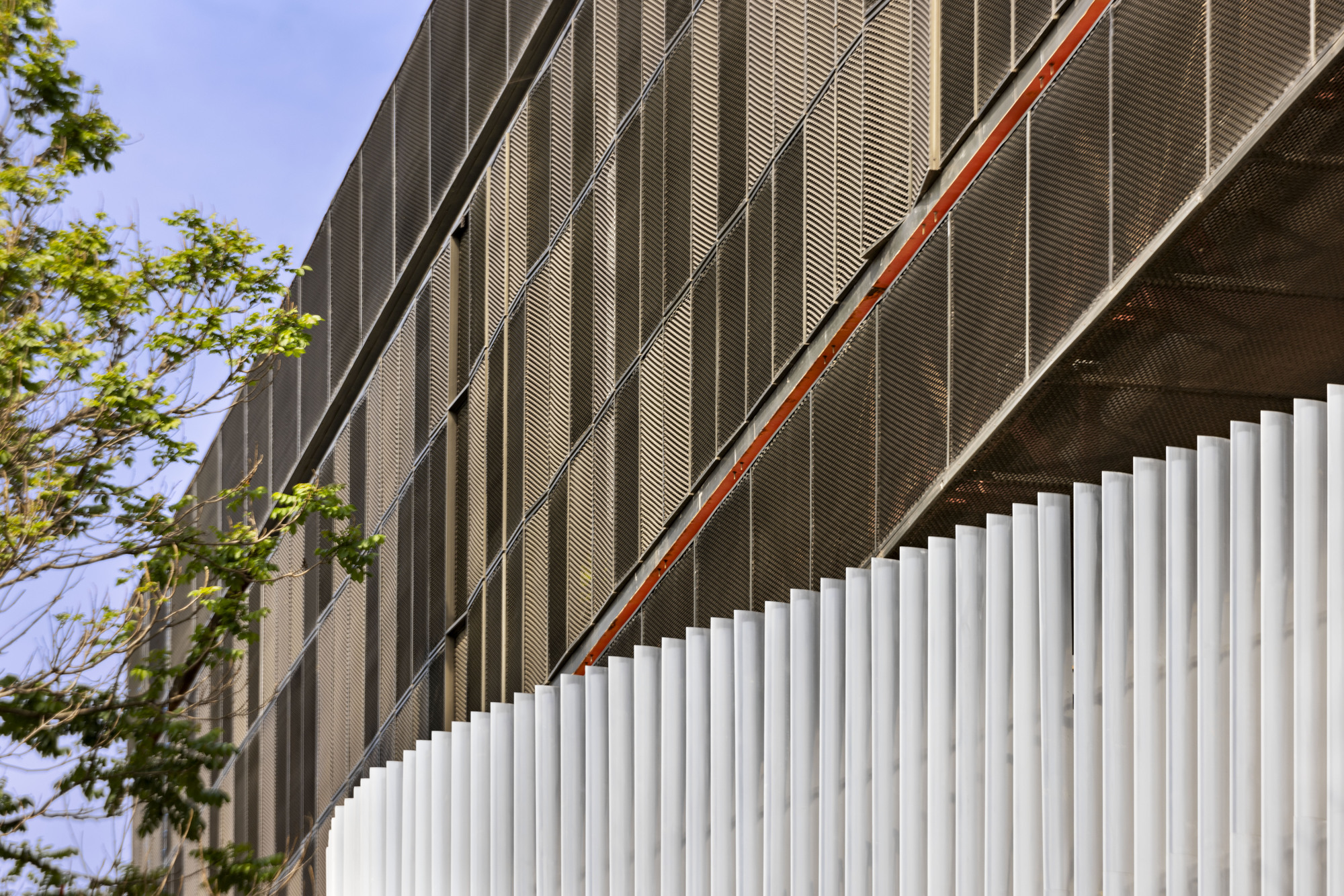
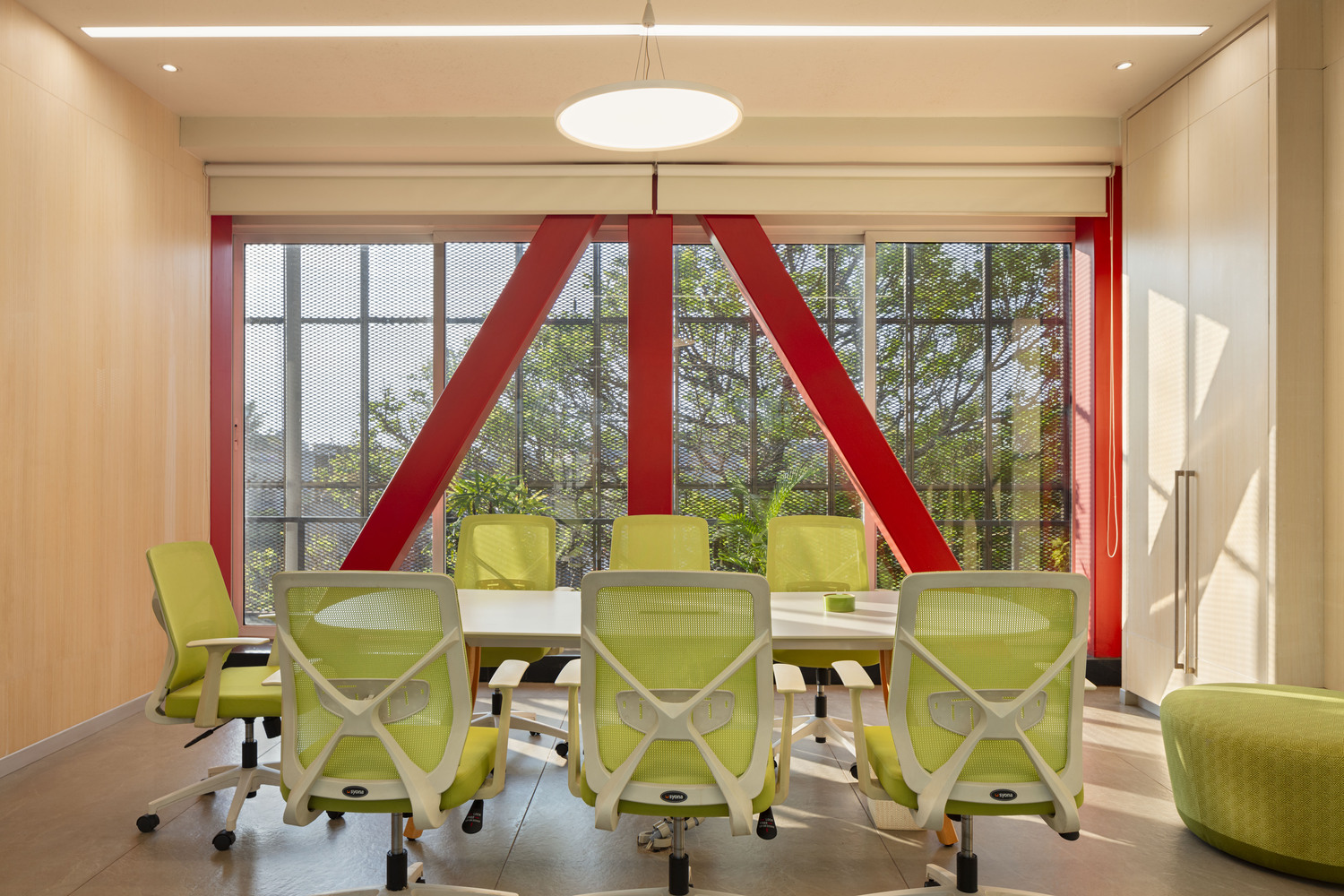

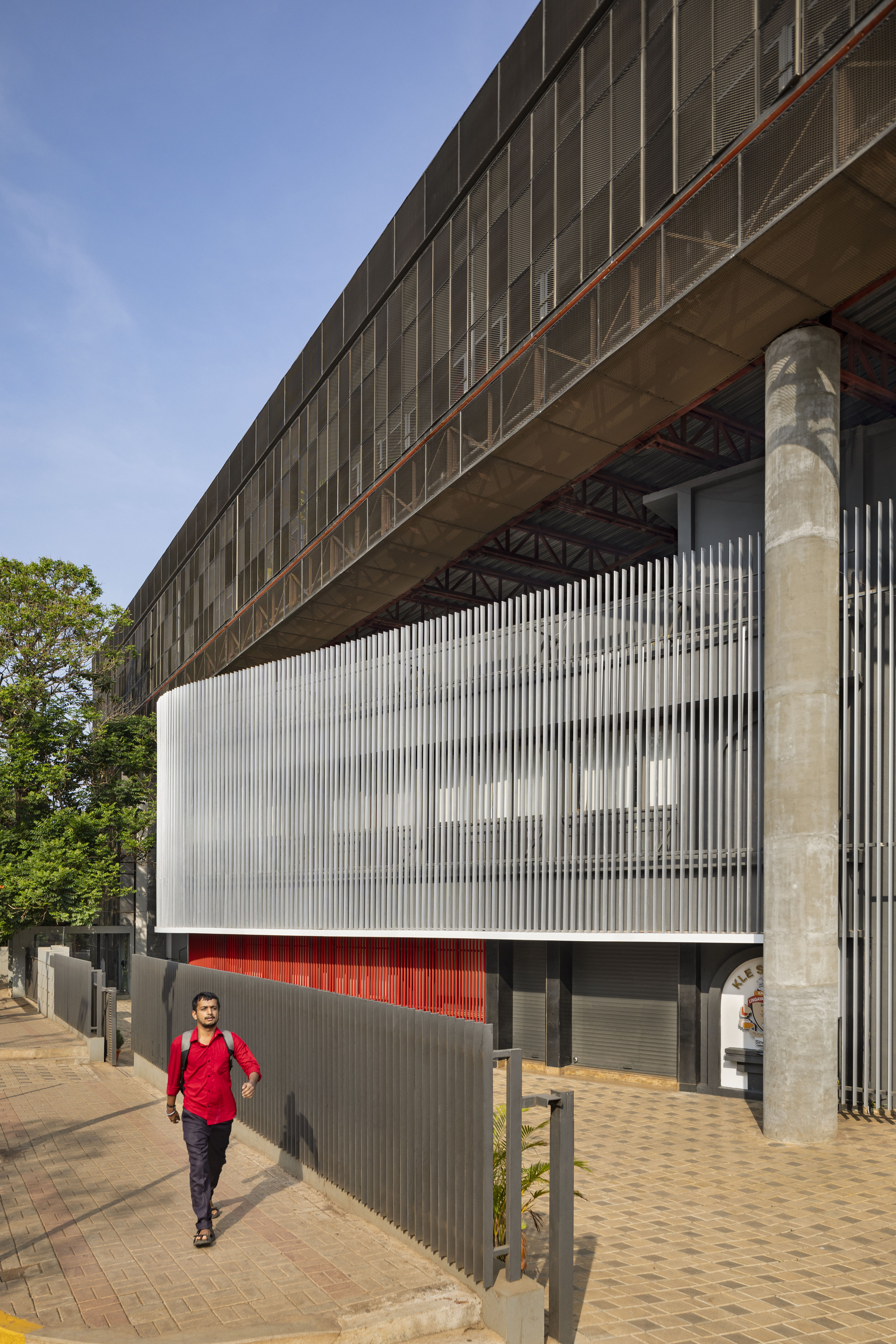



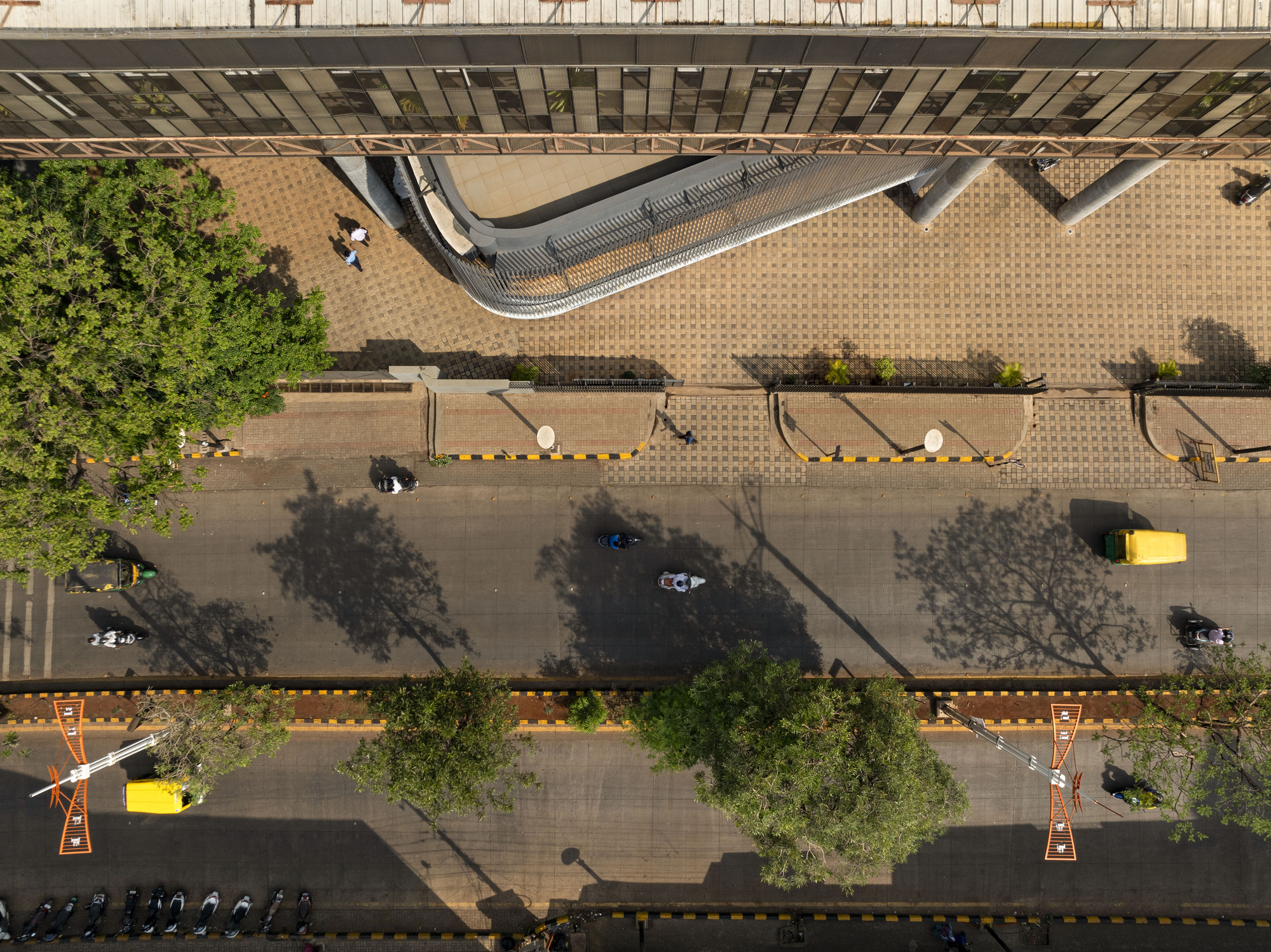


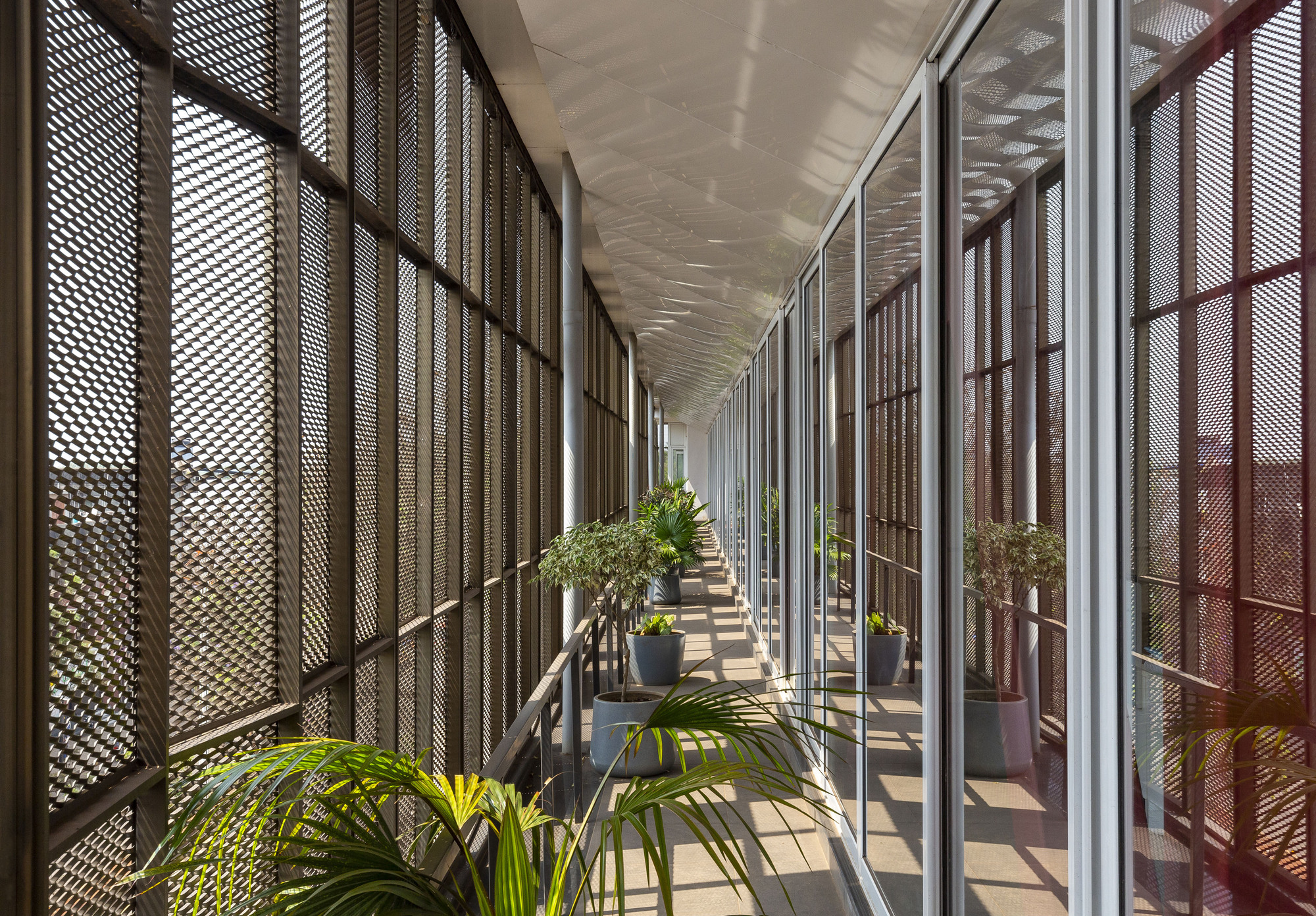





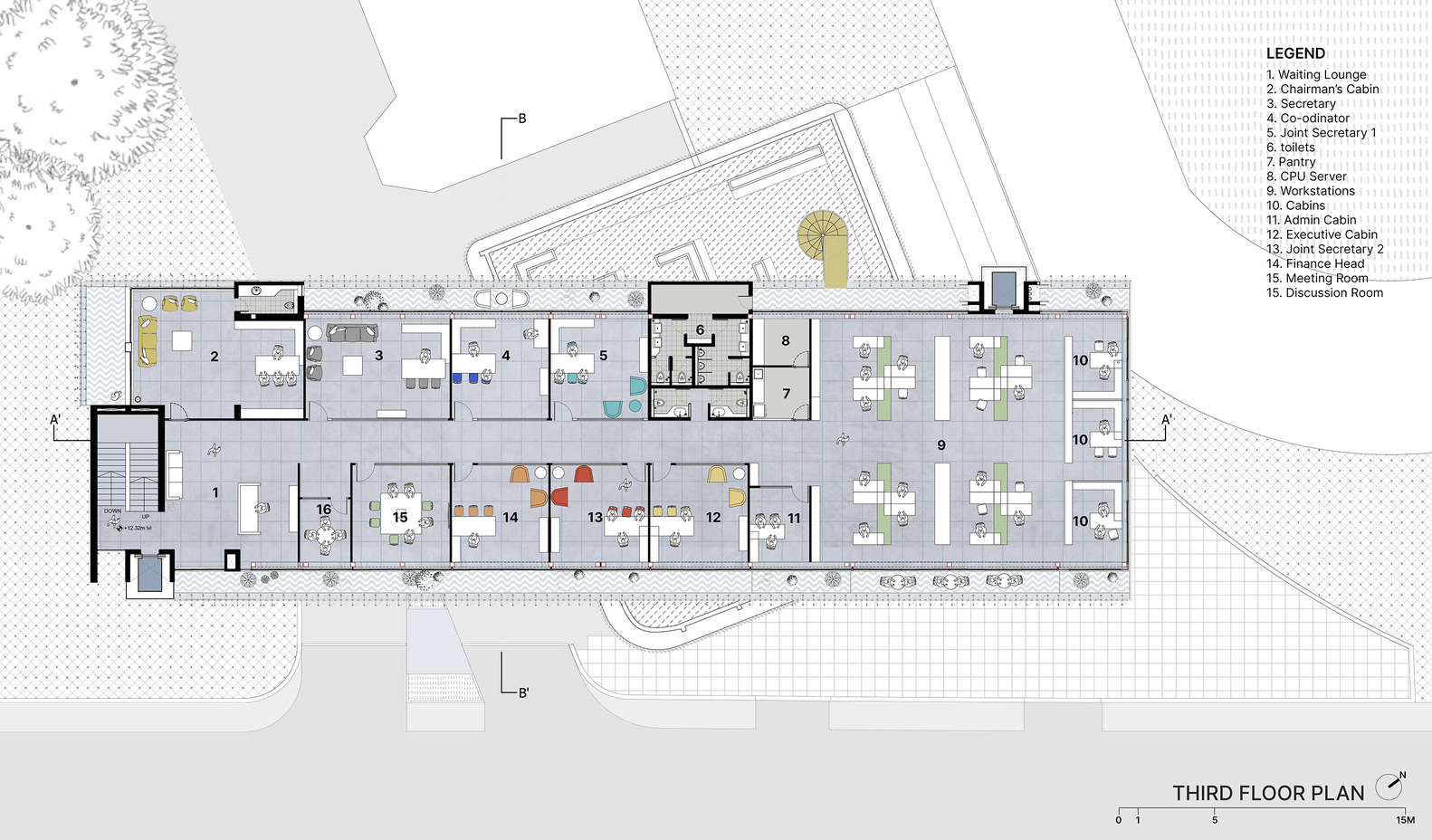

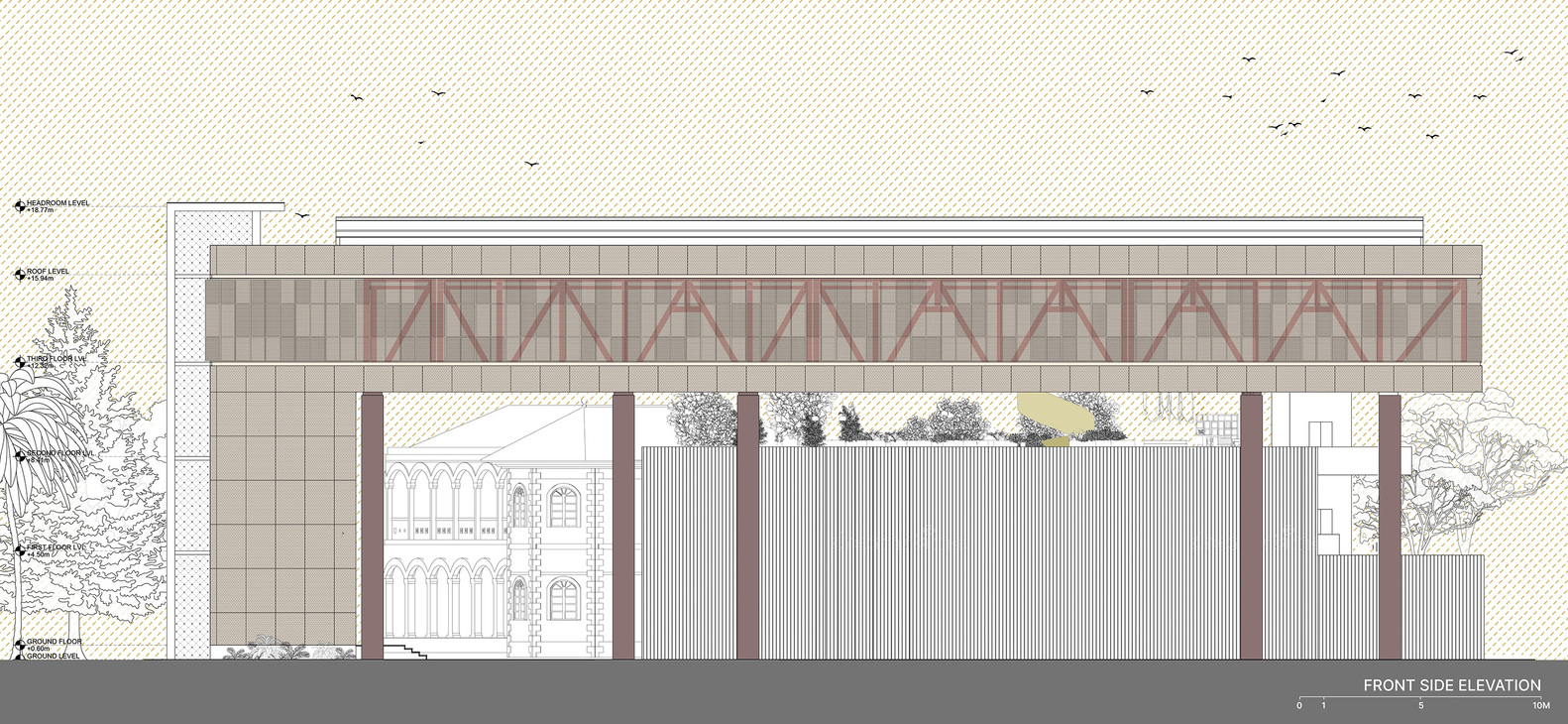



A new addition to a 50-year-old corporate office within a century old educational campus in Belagavi posed a unique design challenge: to expand the existing structure without compromising its integrity, disrupting its daily operations, or overshadowing its historical significance.
Though architecturally unremarkable, the original two storey building held deep institutional value. It had already been retrofitted and was in constant use, making any intrusive structural intervention unfeasible. The expansion needed to respond sensitively to three distinct contexts — its location on a major city road, its position as a frontage to the historic campus, and its edge along the sports ground.
The solution was a minimalist yet strategic intervention: a new structure that floats above the old, supported by just eight cylindrical RCC columns that avoid existing activities below. This hovering volume, framed by two full-floor-height red trusses, forms an open plan office of 1,000 sqm, visually light and spatially efficient. A vertical circulation core connects the addition to the ground, forming an L-shaped profile that creates a striking triple-height entry portal aligned with a central tree-lined avenue. This not only marks a threshold into the campus but also frames heritage structures within.
Wrapped in a continuous verandah inspired by colonial architecture, the new office engages with its surroundings while mitigating the climate. The verandah serves as a social space and climatic buffer, shielding the interiors from sun and rain. Operable aluminium fins and expanded mesh control light and views, while sliding glass doors allow seamless access to the outdoors. Inside, a neutral palette, vibrant accents, and indoor plants create a tranquil, daylit workspace.
The plan is zoned into three sections: an entrance lobby with the chairman's chambers, a central block of private offices and meeting rooms, and a rear section of open workstations overlooking the city and sports field. Exposed roof trusses and a clerestory skylight define a central circulation spine.
Connecting old and new is a glass elevator overlooking the sports field, offering a moment of pause as one transitions between buildings. The terrace of the old office has been reimagined as an interstitial space — partially open, partially sheltered by the new structure — accessible via a sculptural circular staircase.
What appears at first as a simple linear volume is, in fact, a layered response to multiple contextual, functional, and climatic demands. The new addition presents a calm, screened façade to the city, serves as a welcoming portal to the campus, and becomes a subtle yet visible edge to the sports field. Through thoughtful spatial negotiation and quiet clarity, the intervention offers the institution a renewed presence while honouring its legacy.
from archdaily